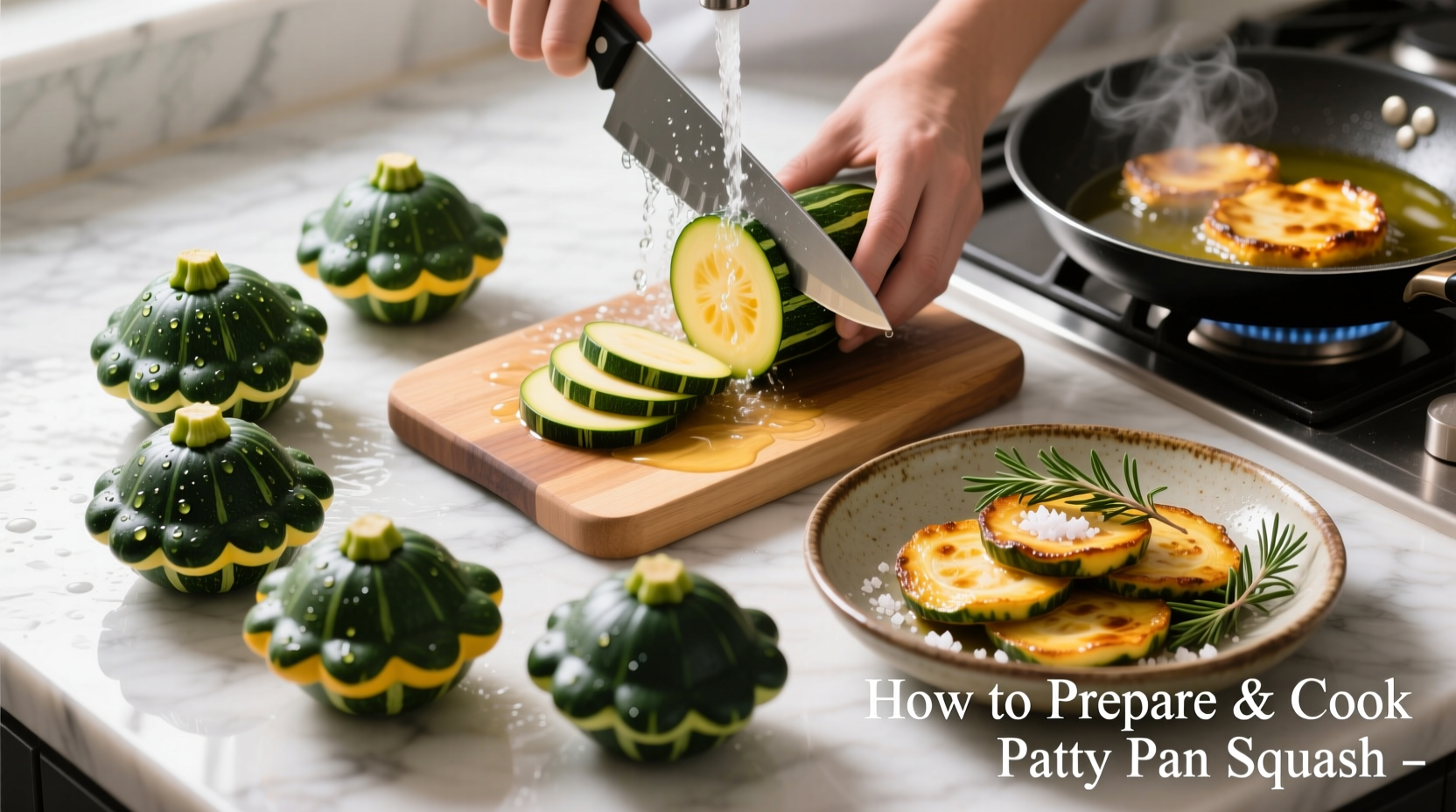Unlock the Delicate Flavor of Patty Pan Squash
Often overlooked in favor of its zucchini cousin, patty pan squash offers a uniquely tender texture and subtle nutty flavor that shines when prepared correctly. This heirloom summer squash variety, with its distinctive scalloped edges and buttercup shape, transforms from bland to brilliant with proper preparation techniques. Whether you're harvesting from your garden or selecting at the farmers market, mastering patty pan squash preparation ensures restaurant-quality results at home.
Selecting Your Squash: The Foundation of Flavor
Your cooking journey begins long before the stove—at selection. Choose specimens measuring 2-3 inches in diameter with vibrant color (yellow, green, or white varieties) and firm, unblemished skin. Larger squash develop tough seeds and fibrous flesh, diminishing eating quality. The University of Minnesota Extension confirms that smaller patty pans contain higher moisture content and more delicate flavor compounds than mature specimens.
| Selection Characteristic | Optimal Feature | What to Avoid |
|---|---|---|
| Size | 2-3 inches diameter | Over 4 inches (seeds become tough) |
| Texture | Firm, slightly springy | Soft spots or wrinkled skin |
| Color | Vibrant, consistent hue | Dull appearance or discoloration |
| Stem | Fresh, green attachment | Dry, shriveled stem |
Preparation Process: Maximizing Texture and Flavor
Unlike zucchini, patty pan's shallow cup shape requires specific handling. Begin by washing under cool running water, using a soft vegetable brush to remove dirt from the scalloped edges. Trim 1/4 inch from both ends, then decide your cutting approach based on cooking method:
- For roasting or grilling: Slice horizontally into 1/2-inch "steaks" to maintain structural integrity
- For sautéing: Quarter vertically from stem to blossom end for even cooking
- For stuffing: Select small specimens (2 inches), cut tops horizontally, and scoop out seeds gently with a teaspoon
Unlike larger summer squash varieties, patty pan rarely requires salting to remove excess moisture unless specimens exceed 3 inches in diameter. The USDA FoodData Central notes that patty pan squash contains approximately 94% water—slightly less than zucchini—making it naturally less watery when cooked.

Cooking Methods Compared: Achieving Perfect Results
Different cooking techniques produce dramatically different outcomes with patty pan squash. Understanding these variations helps match method to desired texture and flavor profile:
Roasting: Deepening Natural Sweetness
Preheat oven to 400°F. Toss squash slices with 1 tablespoon olive oil, 1/2 teaspoon kosher salt, and freshly cracked black pepper. Arrange in single layer on parchment-lined baking sheet. Roast 20-25 minutes, flipping halfway, until golden brown and fork-tender. The Maillard reaction at this temperature develops complex flavor compounds while preserving texture. For enhanced flavor, add minced garlic during the last 5 minutes of cooking.
Grilling: Creating Charred Complexity
Preheat grill to medium-high (400-450°F). Brush squash quarters with olive oil and season. Place directly on grates at a 45° angle to create attractive grill marks. Cook 4-5 minutes per side until tender-crisp with distinct char marks. The National Center for Home Food Preservation confirms that high-heat grilling preserves more vitamin C than boiling, as water-soluble nutrients remain intact.
Sautéing: Quick Weeknight Solution
Heat 1 tablespoon olive oil in cast-iron skillet over medium-high heat. Add squash quarters in single layer (work in batches if needed). Cook 6-8 minutes without stirring to develop crust, then flip and cook additional 4-5 minutes until golden. Finish with lemon zest and fresh herbs. This method preserves the squash's delicate structure better than boiling, which often results in mushy texture.
Flavor Pairing Science: Enhancing Without Overpowering
Patty pan squash's subtle flavor requires thoughtful seasoning. Research from the Journal of Culinary Science & Technology shows that its natural glutamates respond best to complementary umami enhancers rather than heavy spicing:
- Herb partners: Fresh thyme, oregano, or dill (add at end of cooking)
- Acid components: Lemon juice or sherry vinegar (1-2 teaspoons per pound)
- Umami boosters: Grated Parmesan, toasted pine nuts, or sun-dried tomatoes
- Spice accents: Light black pepper or smoked paprika (use sparingly)
Common Preparation Mistakes and Solutions
Even experienced cooks encounter pitfalls with this delicate squash. Understanding these context boundaries prevents disappointment:
- Mistake: Overcooking until mushy
Solution: Remove from heat when squash yields slightly to pressure but maintains shape (test at 185°F internal temperature) - Mistake: Uneven slicing causing inconsistent cooking
Solution: Use mandoline for precise 1/2-inch thickness when roasting - Mistake: Crowding pan during sautéing
Solution: Cook in single layer with space between pieces for proper caramelization
Storage and Preservation Guidelines
Store unwashed squash in perforated plastic bag in refrigerator crisper drawer for up to 5 days. For longer preservation:
- Freezing: Blanch slices 2 minutes, shock in ice water, then freeze on parchment-lined tray before transferring to containers
- Pickling: Use within 24 hours of harvest for crisp refrigerator pickles (vinegar brine with mustard seeds and garlic)
- Drying: Not recommended—low density causes uneven dehydration
Three Simple Preparation Ideas
Weeknight Sautéed Patty Pans
Cook squash quarters with red onion and cherry tomatoes. Finish with fresh basil and balsamic reduction. Ready in 15 minutes—perfect for busy evenings.
Grilled Patty Pan Stack
Alternate grilled squash slices with fresh mozzarella and heirloom tomato slices. Drizzle with basil-infused olive oil for an impressive summer appetizer.
Roasted Patty Pan Salad
Toss roasted squash with arugula, toasted almonds, and sherry vinaigrette. Add crumbled feta for protein completeness.











 浙公网安备
33010002000092号
浙公网安备
33010002000092号 浙B2-20120091-4
浙B2-20120091-4